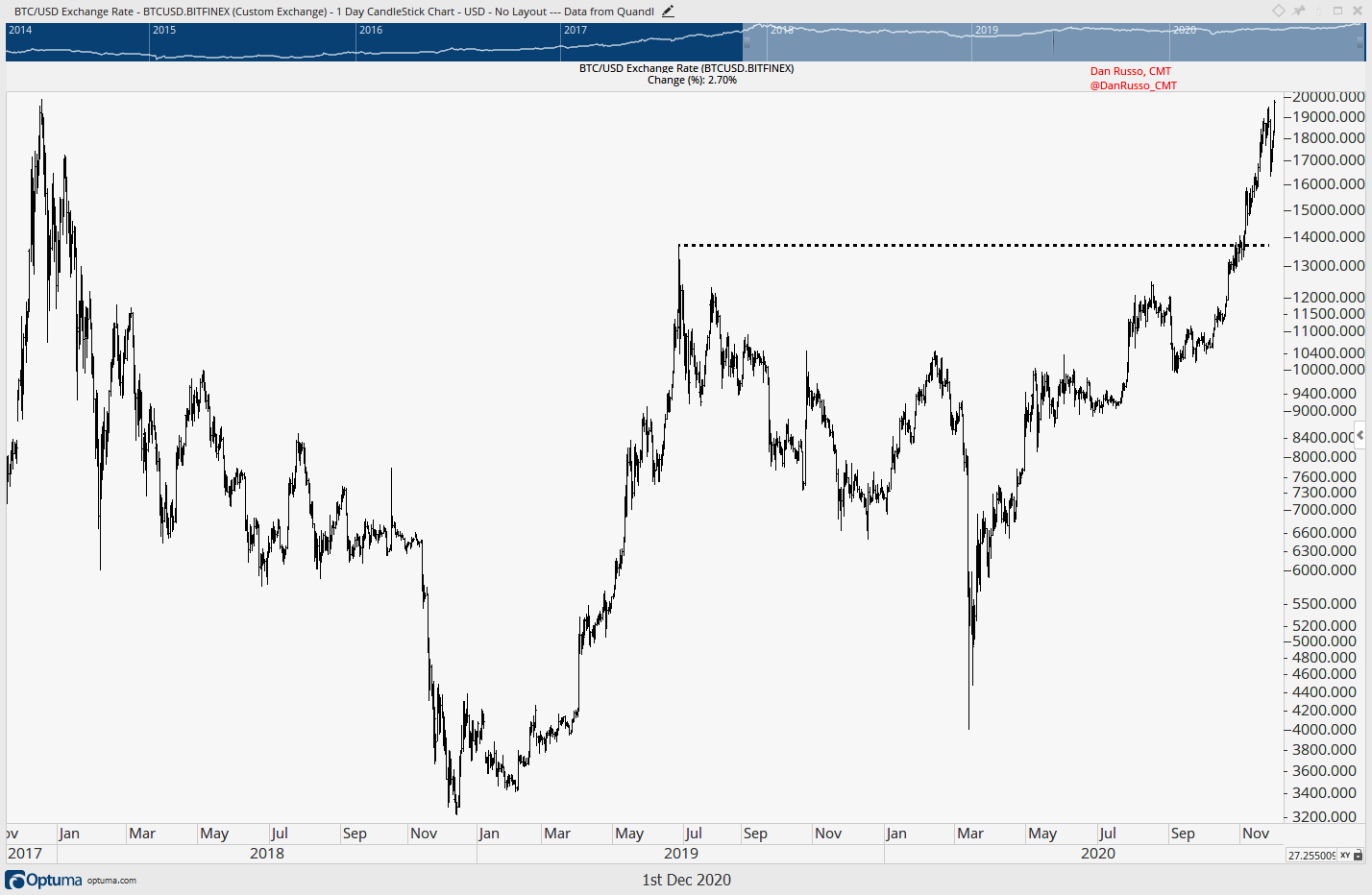Taking the day off on Friday caused me to miss my weekly update on Bitcoin, sharing my views on what I have learned and I think that will impact the current trend. And did I miss some excitement.
Heading into the Thanksgiving holiday in the US, the bulls were giddy at the thought of talking to friends and family about the new price high that was sure to be reached. Bitcoin at rallied from a March low near $4,000 to a high of about $19,500 and was on the cusp of breaching the levels last seen in 2017. But as the east coast of the United States was waking up on Thanksgiving morning, the price was hovering around $17,000. I didn’t think too much of it. It’s volatile, we know that already. But the legions of followers on social media were in an uproar. Bulls and bears alike. It seems that the catalyst for the move lower in price was a tweet thread from Brian Armstrong, the CEO of Coinbase regarding the potential for increased regulation in the space. In particular as it relates to storing bitcoin. Here is how the thread starts:
Long story short, if this regulation were to come to pass, it would involve collecting more data on where the bitcoin is being stored and by whom. This flies in the face of one of the key positives for a select group of diehard bitcoin fans: anonymity. This group believes that it is no one’s business how you buy, sell or store your bitcoin. Their grand view is one of little to no regulation. Here is another part of the thread:
If true, this regulation seems to have elements of “know your customer” (KYC) that traditional financial institutions encounter on a daily basis. At the same time, this regulation would go a long way in areas such as anti-money laundering (AML). Now, I can understand why some people may not like this should it come to pass. Many of the bitcoin bulls, from what I have seen, have what I would call a libertarian tilt and a preference for less regulation. This is all fairly interesting because regulation is one of the risks that I highlighted in my last update back on November 20th.
Now, I would argue that an outright ban would clearly be a death blow to the asset. But short of that, what does increased regulation mean? In short, I really don’t know, but thinking it through and assuming that the regulation is the type that relates to KYC and AML, I would argue that it is has some benefits. I think that the lack of regulation, to some degree, limits the types of investors who can actively participate in the market. I think that in order for larger institutions to make an investment, they need to feel comfortable that there is some level of oversight on the market. Think large pension funds and endowments. Perhaps these “safeguards” are the catalyst for them to “get off zero?”
So on balance, I think that regulation like this could be a net positive for bitcoin over time to the extent that it opens the door for larger investors to enter the market, which is part of the long-term bullish case for bitcoin.
Fast forward to Monday night and bitcoin is trading back near all-time highs. Volatility works in both directions. What happened? Well, a large institution, Guggenheim Partners, revealed in a filing that one of its funds now holds the right to invest up to 10% of its net asset value into the Grayscale Bitcoin Trust (GBTC). According to their site, the Trust is solely and passively invested in Bitcoin, enabling investors to gain exposure to BTC in the form of a security while avoiding the challenges of buying, storing, and safekeeping BTC directly. This is a way for investors to gain exposure to bitcoin without actually buying the coins. There is a lot of information on their site about how it works. I own some. If Guggenheim were to take a full allocation, the investment would be ~$530 million. This news was enough to propel the price of bitcoin higher.
This is all so new, the bitcoin whitepaper was only written 12 years ago. It is certainly fascinating to watch. Looking strictly at the price chart, the run from the March lows has been impressive. The question is, what keeps this trend in place? To me, holding the break above the June 2019 highs (dashed line) would fit the bill.
*Noting in this note should be considered investment advice.






